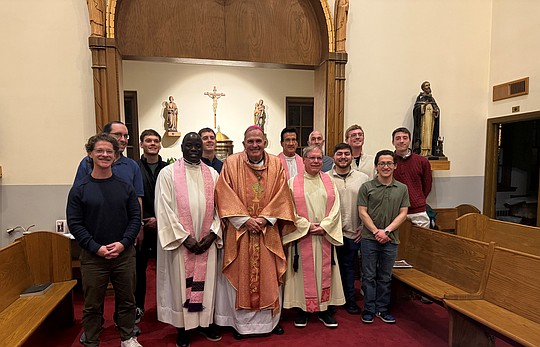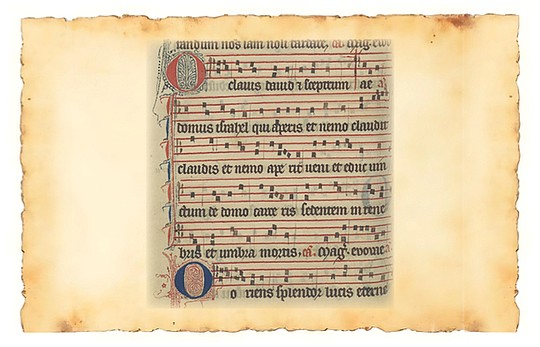Broadcasting the Word
Marianne Hartman reaches 40-year mark in serving Diocese’s communications ministry
May 9, 2024 at 2:03 p.m.

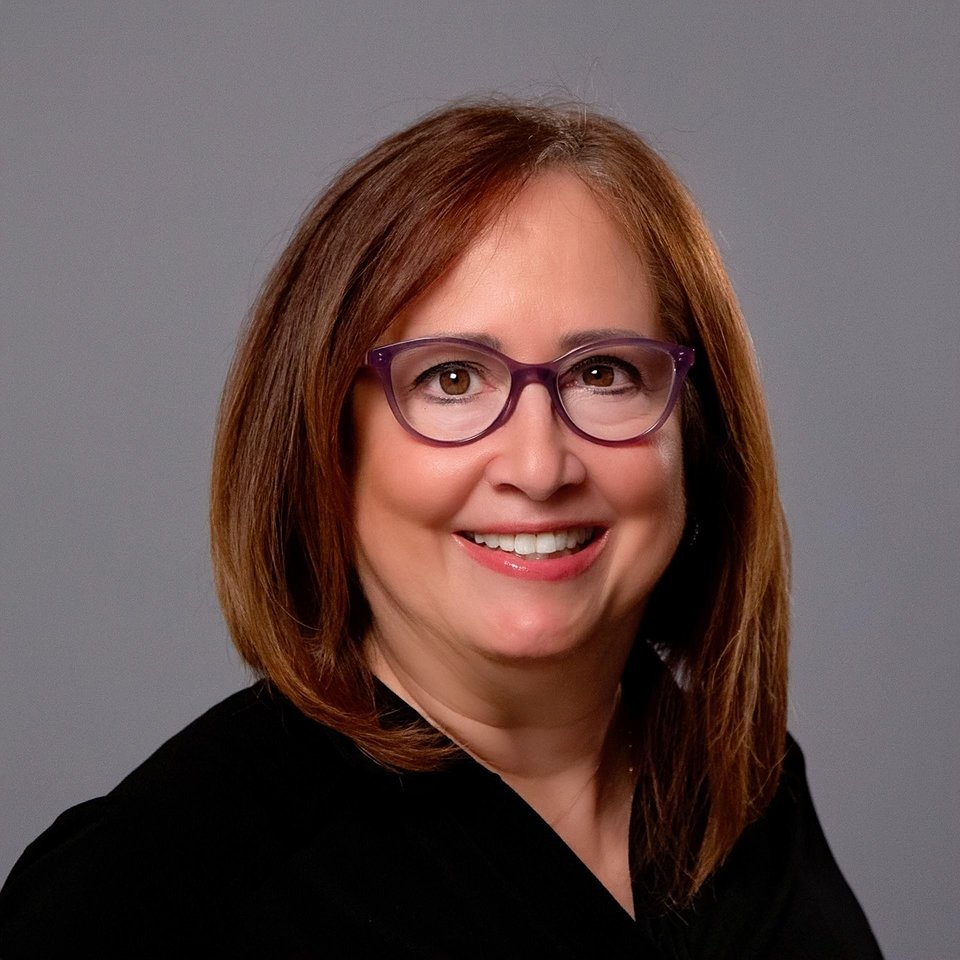 Marianne Hartmann
Marianne Hartmann
It has been four decades since Marianne Hartman began her career and ministry in Catholic communications for the Diocese of Trenton. In that time, she has seen the technology and landscape change dramatically. But one thing remains the same: her desire to further the Gospel through use of Catholic media.
While days and projects may have differed over the years, Hartman has always known that she was in the right place and took great enjoyment in her work. “I have always felt the presence of the Holy Spirit guiding me throughout my life and career,” said the director of multimedia production in the diocesan Office of Communications and Media. “The work can be fun, especially when working with teenagers and young adults.”
HUMBLE BEGINNINGS
Hartman – a native of the Trenton Diocese and graduate of Notre Dame High School – began her media journey with a degree in communications from William Paterson College (now William Paterson University), Wayne. While working temporarily for a packing company as a 23-year-old in 1983, she found and answered an ad in the newspaper for a communications job with the Diocese of Trenton.
“When I arrived, we weren’t producing any programming,” she recalled. “We were distributing Catholic programming from around the country through the Catholic Telecommunications Network of America and airing those shows on the Cable Television Network of New Jersey, both of which no longer exist.”
Original diocesan programming slowly began to take shape, including the talk show “The Looking Glass,” which later became “The Catholic Corner,” hosted by Msgr. Walter Nolan for 20 years; “Codebreakers,” a series of one-minute radio spots for and by teens; “Reflections on the Word” radio spot series with then-Bishop John C. Reiss and other local priests; and the radio show “Black Catholics Yes!” hosted first by Sister Loretto Evans and then by writer and editor Angela Dodson.
“It was always fun working with new hosts and talent, and seeing how they would grow and shine in their role,” Hartman said.
EXPANDING PROGRAMMING, FAITH
The 2000s saw Hartman involved in an expansion of original programming, notably with the television program for teens “Realfaith TV.”
“We covered topics that were important to teenagers and how their faith helped them to work through those issues,” she explained.
The multimedia department produced 26 episodes of the show per year during the summer, with teens from around the Diocese conducting interviews with the spotlight guest, with peers on the Seaside Heights Boardwalk and working behind the camera on production.
“It’s great in any way to help young people see the presence of God in their lives and the importance of faith,” Hartman said. “I’m old, but I think I have a youthful heart!”
Spanish language programming also came into play on Hartman’s watch, beginning with the television program “Cristo Para Todos” (Christ for Everyone), which featured in-studio and on-location interviews, a musical segment and faith reflections.
Hartman credits not only the regional and national Catholic meetings she attended, but also the various guests and Chancery contributors who helped her learn more about the special field of Catholic media.
“Guests who shared stories of triumph and overcoming adversity through their faith … Msgr. Nolan was also a big influence; I learned so much from him as he interviewed guests,” she remembered. “Some memorable ones were Tony Melendez, Martin Sheen, Sister Helen Prejean … the Duddy family’s story of forgiveness for their son’s friend who was driving drunk in the car where their son Francis was a passenger and died. And Julie Makima, who was conceived when her mother was raped – she said she was conceived in God’s love. … So many I can’t even remember.”
MOVING ONLINE
As television viewership waned and online engagement became the focus, the Diocese transitioned from original programming to other forms of video production under Hartman’s leadership. Livestreaming major diocesan events and producing news and feature videos for digital distribution became the next frontier for Hartman and her team.
“Catholic media needs to be available to people ‘where they are,’” she noted. “And we have to get the message especially to the younger generation.”
Early successes with live satellite broadcasting included the 1995 visit of Mother Teresa to St. Mary of the Assumption Cathedral, Trenton, via EWTN. They also livestreamed and broadcast, with EWTN and simulcast on Domestic Church Media radio, the episcopal ordination of Bishop David M. O’Connell, C.M., in 2010.
Looking to replace the cost-prohibitive television production, Hartman’s group embraced a new media vehicle – YouTube.
“Programming in general started to move away from broadcast to more web-based and streaming; we moved into producing shorter stand-alone videos just for the web,” Hartman said.
The COVID-19 pandemic necessitated even more use of streaming technology, including “special Masses that were livestreamed because people couldn’t attend, “she noted.
Livestreaming continues to grow as an important way to help people experience more of the Church and the list of events that are covered by the Department of Multimedia Production has grown significantly. Hartman pointed to the priest and deacon ordinations, Catholic Schools Mass, Blue Mass, Chrism Mass, and any other Mass the Bishop celebrates at a diocesan level. Her team also produces promotional and highlight videos for youth and young adult events like the Diocesan Youth Conference.
“The world is flooded with all kinds of messages on social media; anybody can post just about anything,” she said. “We need to be the influencers – present and available to people just as much as the others. That means producing programming that will get their attention and draw them to the truth of the Catholic message.”
SUPPORT OF COLLEAGUES
While the early projects required a larger staff and substantial work with external providers, like Riverview Studios in Bordentown, the move to digital work has allowed for a small, but dedicated team. Still, she remains grateful for the connections her communications career has afforded.
“This is my second home. My co-workers are my family,” she said. “I’ve worked with some incredibly amazing, faith-filled people throughout the years who have helped me to grow in my faith, as a person and as a professional in the work I do. To know that you have a team of people to advise you, support you and pray for you is invaluable.”
She is grateful for those who have made her work possible, especially producer/editor Ryan Larason and freelancer Frank Lettieri. “It has really helped to have [them] on the team,” she said. “Their expertise and knowledge of current trends helps to keep the Multimedia Department current. It also means a lot to have the support of my executive director, Rayanne Bennett, and the Bishop.”
As far as the future of Catholic communications goes, Hartman remains pragmatic.
“I guess I’m the kind of person who takes it one step at a time. I try not to look too far into the future,” she said. “I’m not afraid of change and adapting however I need to.”
“It’s not an easy task – there’s lots of competition out there, “she continued. “But we have to find creative ways to package our message [and] to make it heard by as many people as possible.”
The Church needs quality Catholic journalism now more than ever. Please consider supporting this work by signing up for a SUBSCRIPTION (click HERE) or making a DONATION to The Monitor (click HERE). Thank you for your support.
Related Stories
Sunday, December 14, 2025
E-Editions
Events
 Marianne Hartmann
Marianne Hartmann
It has been four decades since Marianne Hartman began her career and ministry in Catholic communications for the Diocese of Trenton. In that time, she has seen the technology and landscape change dramatically. But one thing remains the same: her desire to further the Gospel through use of Catholic media.
While days and projects may have differed over the years, Hartman has always known that she was in the right place and took great enjoyment in her work. “I have always felt the presence of the Holy Spirit guiding me throughout my life and career,” said the director of multimedia production in the diocesan Office of Communications and Media. “The work can be fun, especially when working with teenagers and young adults.”
HUMBLE BEGINNINGS
Hartman – a native of the Trenton Diocese and graduate of Notre Dame High School – began her media journey with a degree in communications from William Paterson College (now William Paterson University), Wayne. While working temporarily for a packing company as a 23-year-old in 1983, she found and answered an ad in the newspaper for a communications job with the Diocese of Trenton.
“When I arrived, we weren’t producing any programming,” she recalled. “We were distributing Catholic programming from around the country through the Catholic Telecommunications Network of America and airing those shows on the Cable Television Network of New Jersey, both of which no longer exist.”
Original diocesan programming slowly began to take shape, including the talk show “The Looking Glass,” which later became “The Catholic Corner,” hosted by Msgr. Walter Nolan for 20 years; “Codebreakers,” a series of one-minute radio spots for and by teens; “Reflections on the Word” radio spot series with then-Bishop John C. Reiss and other local priests; and the radio show “Black Catholics Yes!” hosted first by Sister Loretto Evans and then by writer and editor Angela Dodson.
“It was always fun working with new hosts and talent, and seeing how they would grow and shine in their role,” Hartman said.
EXPANDING PROGRAMMING, FAITH
The 2000s saw Hartman involved in an expansion of original programming, notably with the television program for teens “Realfaith TV.”
“We covered topics that were important to teenagers and how their faith helped them to work through those issues,” she explained.
The multimedia department produced 26 episodes of the show per year during the summer, with teens from around the Diocese conducting interviews with the spotlight guest, with peers on the Seaside Heights Boardwalk and working behind the camera on production.
“It’s great in any way to help young people see the presence of God in their lives and the importance of faith,” Hartman said. “I’m old, but I think I have a youthful heart!”
Spanish language programming also came into play on Hartman’s watch, beginning with the television program “Cristo Para Todos” (Christ for Everyone), which featured in-studio and on-location interviews, a musical segment and faith reflections.
Hartman credits not only the regional and national Catholic meetings she attended, but also the various guests and Chancery contributors who helped her learn more about the special field of Catholic media.
“Guests who shared stories of triumph and overcoming adversity through their faith … Msgr. Nolan was also a big influence; I learned so much from him as he interviewed guests,” she remembered. “Some memorable ones were Tony Melendez, Martin Sheen, Sister Helen Prejean … the Duddy family’s story of forgiveness for their son’s friend who was driving drunk in the car where their son Francis was a passenger and died. And Julie Makima, who was conceived when her mother was raped – she said she was conceived in God’s love. … So many I can’t even remember.”
MOVING ONLINE
As television viewership waned and online engagement became the focus, the Diocese transitioned from original programming to other forms of video production under Hartman’s leadership. Livestreaming major diocesan events and producing news and feature videos for digital distribution became the next frontier for Hartman and her team.
“Catholic media needs to be available to people ‘where they are,’” she noted. “And we have to get the message especially to the younger generation.”
Early successes with live satellite broadcasting included the 1995 visit of Mother Teresa to St. Mary of the Assumption Cathedral, Trenton, via EWTN. They also livestreamed and broadcast, with EWTN and simulcast on Domestic Church Media radio, the episcopal ordination of Bishop David M. O’Connell, C.M., in 2010.
Looking to replace the cost-prohibitive television production, Hartman’s group embraced a new media vehicle – YouTube.
“Programming in general started to move away from broadcast to more web-based and streaming; we moved into producing shorter stand-alone videos just for the web,” Hartman said.
The COVID-19 pandemic necessitated even more use of streaming technology, including “special Masses that were livestreamed because people couldn’t attend, “she noted.
Livestreaming continues to grow as an important way to help people experience more of the Church and the list of events that are covered by the Department of Multimedia Production has grown significantly. Hartman pointed to the priest and deacon ordinations, Catholic Schools Mass, Blue Mass, Chrism Mass, and any other Mass the Bishop celebrates at a diocesan level. Her team also produces promotional and highlight videos for youth and young adult events like the Diocesan Youth Conference.
“The world is flooded with all kinds of messages on social media; anybody can post just about anything,” she said. “We need to be the influencers – present and available to people just as much as the others. That means producing programming that will get their attention and draw them to the truth of the Catholic message.”
SUPPORT OF COLLEAGUES
While the early projects required a larger staff and substantial work with external providers, like Riverview Studios in Bordentown, the move to digital work has allowed for a small, but dedicated team. Still, she remains grateful for the connections her communications career has afforded.
“This is my second home. My co-workers are my family,” she said. “I’ve worked with some incredibly amazing, faith-filled people throughout the years who have helped me to grow in my faith, as a person and as a professional in the work I do. To know that you have a team of people to advise you, support you and pray for you is invaluable.”
She is grateful for those who have made her work possible, especially producer/editor Ryan Larason and freelancer Frank Lettieri. “It has really helped to have [them] on the team,” she said. “Their expertise and knowledge of current trends helps to keep the Multimedia Department current. It also means a lot to have the support of my executive director, Rayanne Bennett, and the Bishop.”
As far as the future of Catholic communications goes, Hartman remains pragmatic.
“I guess I’m the kind of person who takes it one step at a time. I try not to look too far into the future,” she said. “I’m not afraid of change and adapting however I need to.”
“It’s not an easy task – there’s lots of competition out there, “she continued. “But we have to find creative ways to package our message [and] to make it heard by as many people as possible.”
The Church needs quality Catholic journalism now more than ever. Please consider supporting this work by signing up for a SUBSCRIPTION (click HERE) or making a DONATION to The Monitor (click HERE). Thank you for your support.



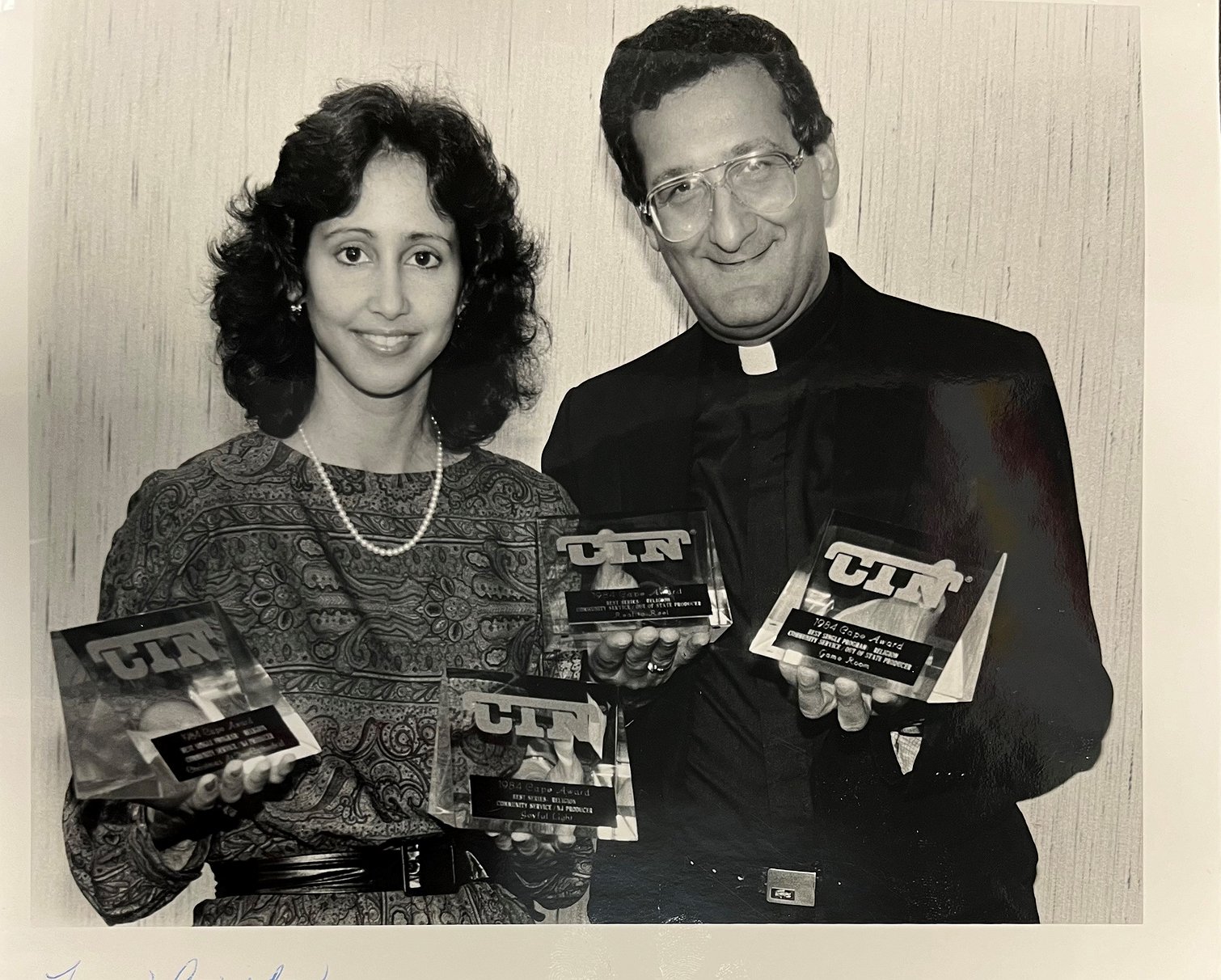
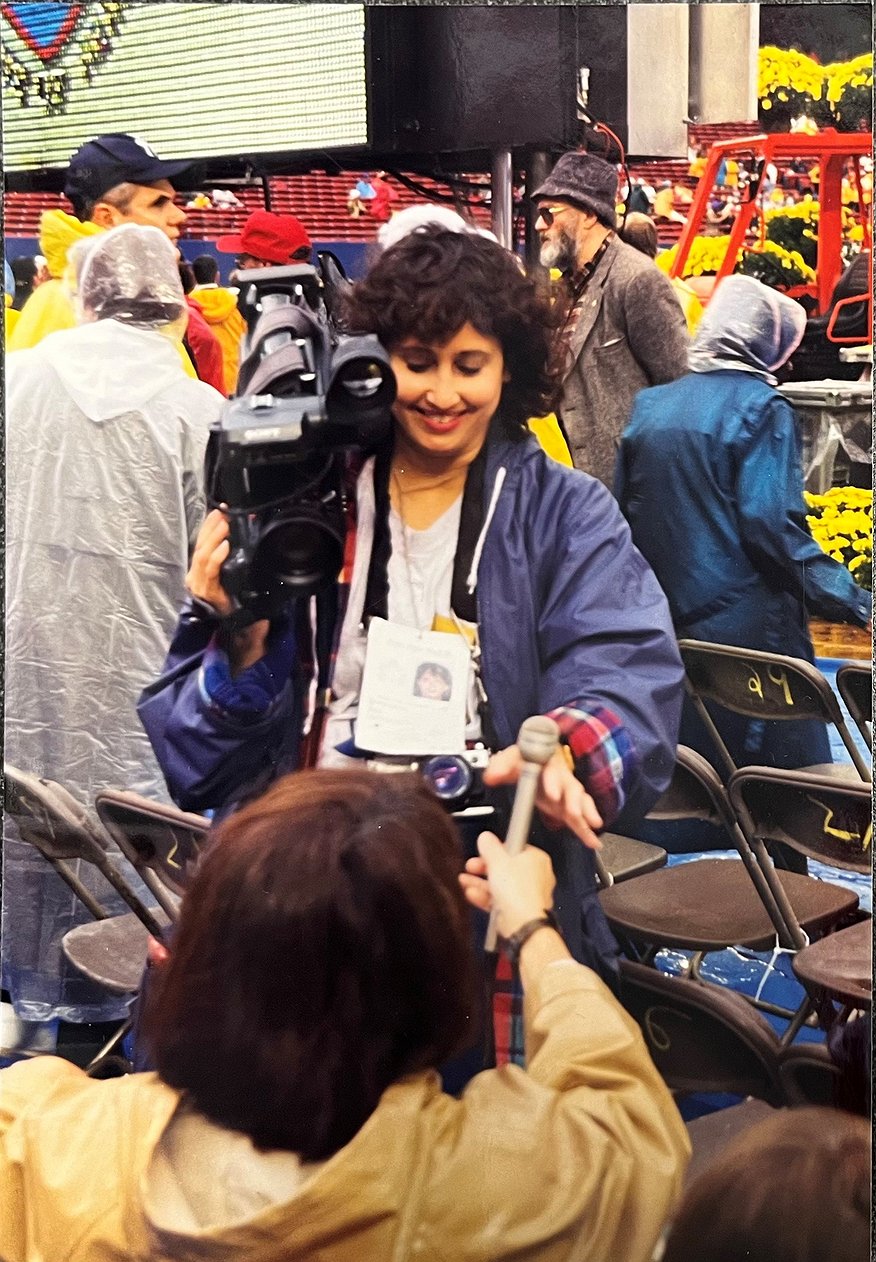
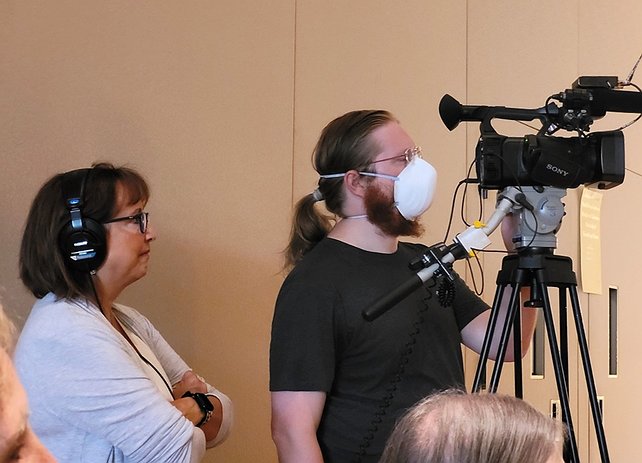
 Collection to boost Catholic communications planned for May 12
Collection to boost Catholic communications planned for May 12


